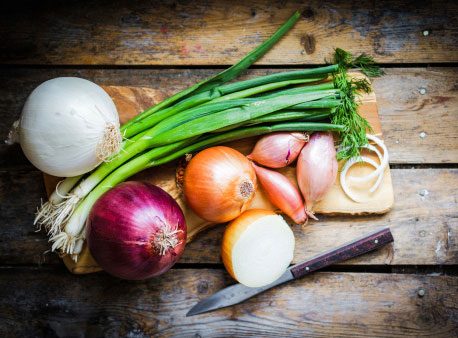
Garlic and Onions
What isn’t garlic good for? In the case of hay fever, the oh-so-smelly bulbs appear to work by supporting the immune system with their rich store of antioxidants. Researchers have identified a link between a higher intake of certain antioxidants and a lower incidence of hay fever.
Aim for: Use fresh garlic liberally as a seasoning. You can also cut a whole clove into several chunks and swallow them like pills for a daily dose. Your stomach acids will break them down and release antioxidants as the garlic travels through the colon.
This humble bulb packs a hefty dose of quercetin, an antioxidant that can help reduce inflammation and may help prevent the release of histamine from immune cells called mast cells. Quercetin also helps improve the body’s absorption of vitamin C, another antioxidant with immunity-boosting powers.
Quercetin may even work to stabilize cell membranes so they’re less reactive to allergens. Other good sources are apples with skin, berries, red grapes, and black tea.
Aim for: Sprinkle raw onions on salads, stews, burritos, and other foods whenever you can.
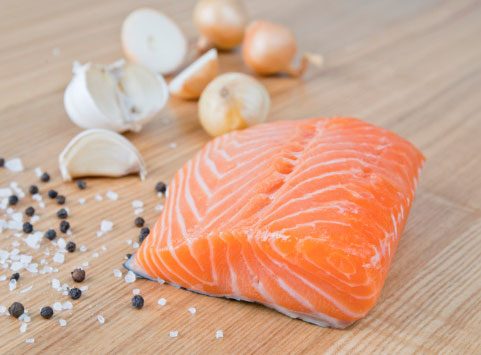
Salmon and Other Fatty Fish
Fatty fish like salmon, sardines, and mackerel should be your first line of dietary defense against allergies. That’s because they contain generous amounts of omega-3 fatty acids, which help minimize inflammation, a direct cause of most allergy symptoms. Several studies suggest that kids who start eating fish early in life may even be less likely to have allergies later. Eating more fish helps balance out the ratio of omega-3s to omega-6s in the body, which seems to have several beneficial effects on the immune system that translate into fewer allergy symptoms.
Aim for: One to two servings of fatty fish such as salmon, tuna, and mackerel per week. Look to fish-oil supplements if you want to get even more omega-3s. Start your children on a fish-rich diet early in life.
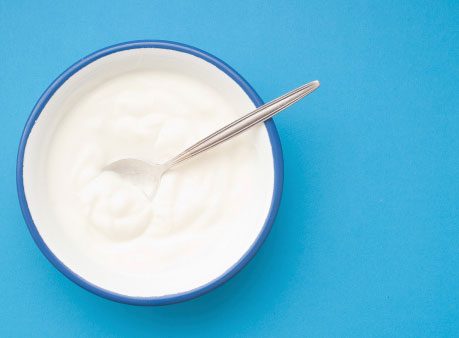
Yogurt With Live Cultures
The live beneficial bacteria found in yogurt and other fermented products like kefir help keep the flora and fauna in your gut-where many immune cells are located-healthy. Some experts believe that the Western diet no longer includes enough fermented foods to keep a balance of healthy bacteria in our gastrointestinal tracts and that the prevalence of allergies has risen in response. These foods stimulate the body to produce certain white blood cells and antibodies as well as various growth factors that are important for keeping the body from overreacting to allergens.
Aim for: One or 2 cups (250 or 500 millilitres) of yogurt or other fermented milk products per day.
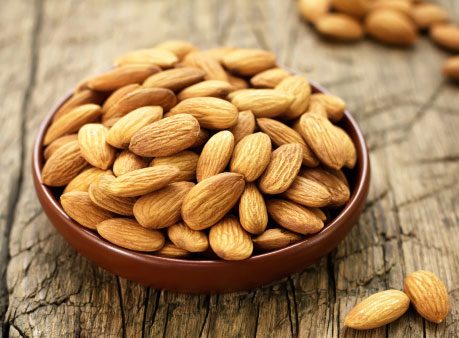
Almonds, Leafy Greens, and Other Vitamin E Sources
In one German study of 1,700 adults with and without hay fever, those who ate foods rich in vitamin E (the equivalent of 10 to 13 milligrams per day) had a 30 percent lower incidence of hay fever than those who ate diets low in the vitamin.
Aim for: Lots of leafy greens, whole grains, nuts, and avocados. Thirty grams (1 ounce) of almonds provides 7 milligrams of vitamin E.
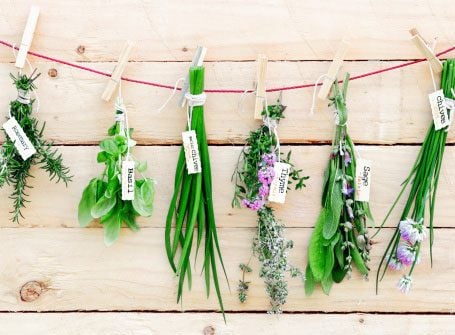
Lemon Balm, Rosemary, and Other Herbs
All of these herbs, along with oregano, sage and marjoram, contain rosmarinic oil in their leaves. One Japanese study showed that this acid, an extract of the oil, has an anti-inflammatory effect that helps reduce the symptoms of seasonal allergies.
Aim for: Season your dishes liberally with fresh herbs to reap the most benefit. Make lemon balm tea, add chopped oregano and rosemary to pasta dishes, and use sage and marjoram on poultry and fish.